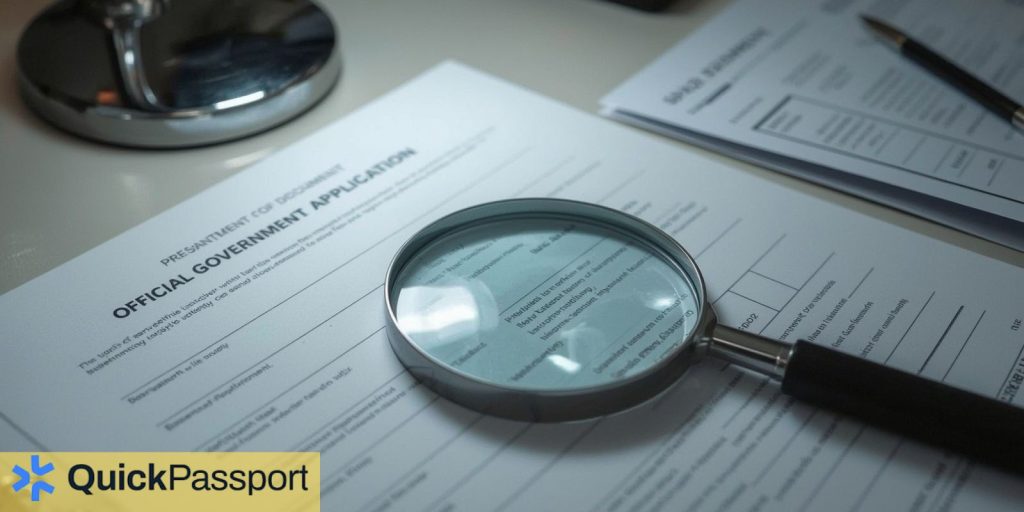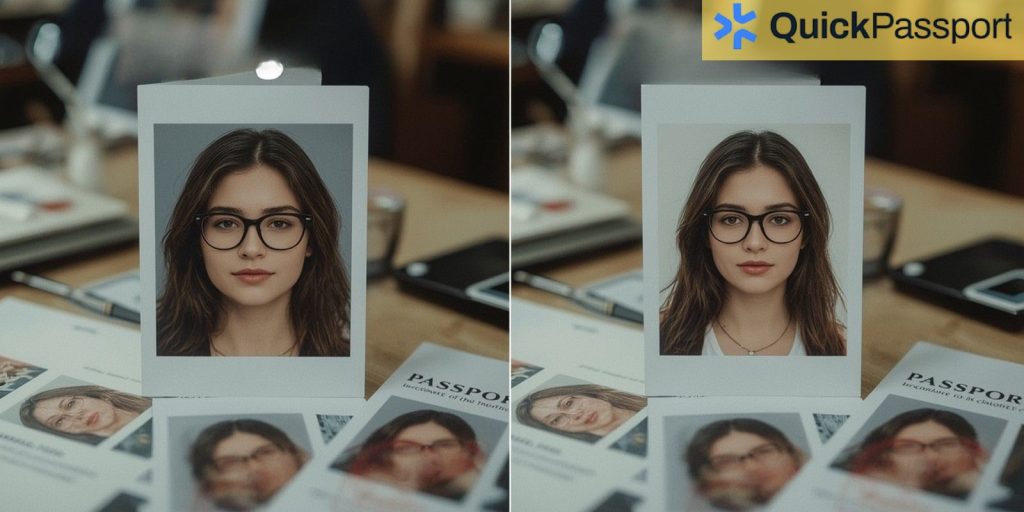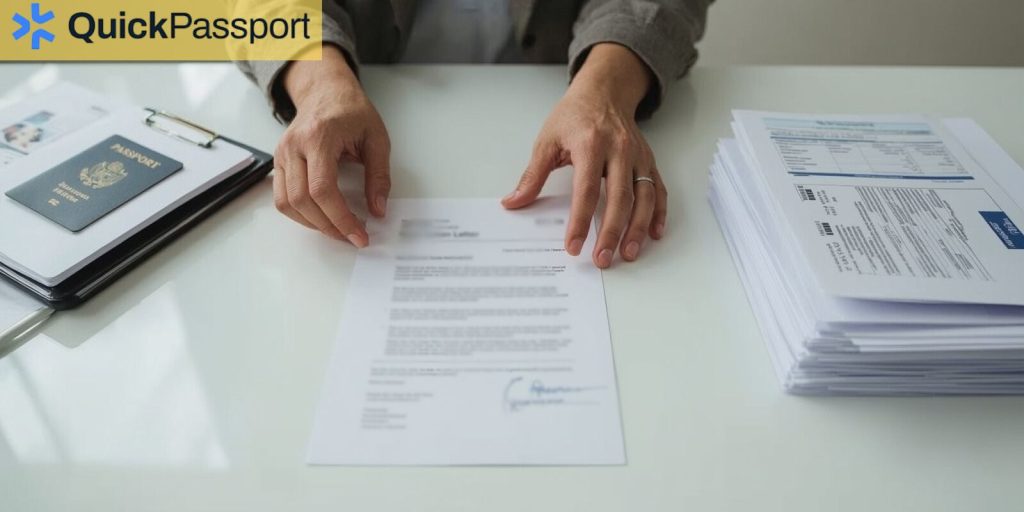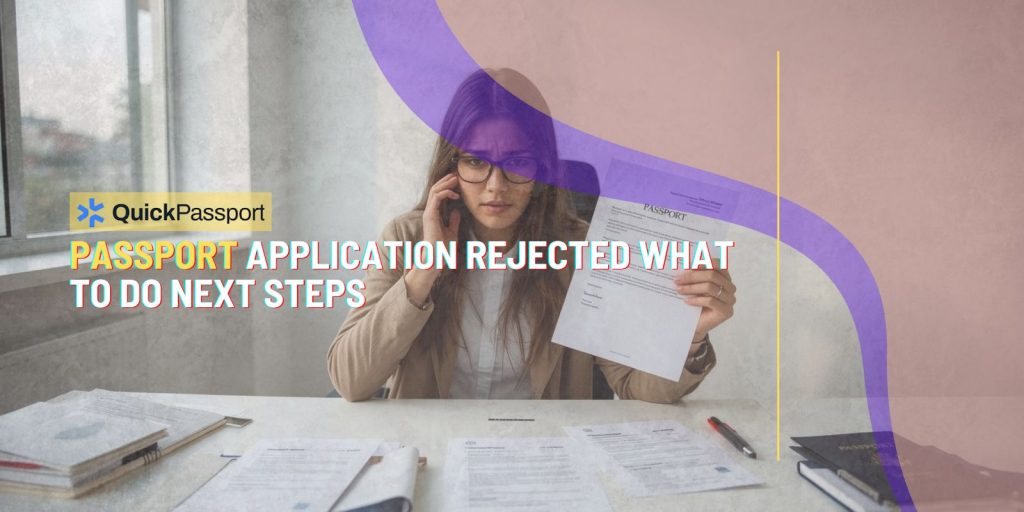Receiving a passport application rejection can be one of the most frustrating experiences, especially when you have travel plans on the horizon. Whether you’re planning a long-awaited vacation, have business commitments abroad, or need to visit family overseas, a rejected passport application can throw your entire schedule into disarray. The good news is that a rejection doesn’t mean the end of your travel dreams – it simply means you need to understand what went wrong and take the appropriate steps to correct the issues.
When your passport application gets rejected, it’s natural to feel overwhelmed and confused about what to do next. The rejection notice you receive will typically outline the specific reasons why your application was denied, but understanding these reasons and knowing how to address them effectively requires careful attention to detail and proper guidance. Many applicants make the mistake of immediately resubmitting their application without fully addressing the underlying issues, which often leads to another rejection and further delays.
The passport application process involves strict requirements and documentation standards that must be met precisely. Even minor errors or omissions can result in rejection, from incorrect photograph specifications to missing supporting documents or incomplete forms. Understanding the most common reasons for passport rejection and knowing the exact steps to take afterward can save you valuable time, money, and stress while getting you back on track toward obtaining your passport.
Professional passport services like QuickPassport – Denver have extensive experience helping applicants navigate the complexities of passport rejections and reapplications. Their expertise can be invaluable in identifying exactly what went wrong with your initial application and ensuring that your resubmission meets all requirements perfectly. With proper guidance and attention to detail, most passport application issues can be resolved efficiently, allowing you to obtain your passport and proceed with your travel plans.
Key Takeaways
- Review the rejection notice carefully: Your rejection letter will specify exactly why your application was denied, providing a roadmap for what needs to be corrected before resubmission.
- Common rejection reasons include: Inadequate proof of citizenship, improper photographs, incomplete forms, insufficient identification, or missing supporting documentation.
- Don’t rush to reapply: Take time to thoroughly address all issues mentioned in the rejection notice before submitting a new application to avoid repeat rejections.
- Gather all required documents: Ensure you have proper proof of citizenship, valid identification, acceptable photographs, and any additional supporting documents specific to your situation.
- Consider expedited processing: If you have urgent travel needs, expedited services can help you obtain your passport faster once you’ve corrected the rejection issues.
- Professional assistance can help: Passport service providers can review your documents, identify potential issues, and guide you through the reapplication process to maximize your chances of approval.
- Keep copies of everything: Maintain detailed records of all documents submitted, correspondence received, and steps taken throughout the reapplication process.
- Plan for additional processing time: Factor in extra time for the reapplication process when making travel arrangements, as corrections and resubmission will extend your timeline.
Understanding Passport Application Rejections
Passport application rejections occur when the U.S. State Department determines that your submitted application fails to meet one or more of their strict requirements. These rejections are not arbitrary decisions but are based on specific criteria and documentation standards that must be satisfied for every applicant. Understanding the systematic approach used to evaluate applications can help you better comprehend why rejections happen and how to prevent them in future submissions.

The passport application review process involves multiple checkpoints where different aspects of your application are scrutinized. First, administrative staff verify that all required forms are completed correctly and that appropriate fees have been paid. Next, document specialists examine your proof of citizenship and identification to ensure they meet authenticity and validity requirements. Photography experts review your passport photos against detailed specifications for size, composition, lighting, and background requirements.
When any component of your application fails to meet the established standards, the entire application gets rejected rather than just requesting corrections for specific items. This all-or-nothing approach ensures that only complete, properly documented applications proceed through the system, but it also means that even minor errors can result in full rejection and require complete resubmission.
The rejection process typically takes the same amount of time as standard processing, meaning you won’t know about issues until several weeks after submission. This timing can be particularly problematic if you have upcoming travel plans, which is why many applicants choose to work with professional services to ensure their initial application is correct rather than risking delays from rejections.
Most Common Reasons for Passport Application Rejection
Understanding the most frequent causes of passport application rejection can help you identify potential issues before they become problems. Inadequate proof of citizenship ranks as the leading cause of rejections, particularly when applicants submit photocopies instead of original documents or provide documents that don’t clearly establish their U.S. citizenship status. Birth certificates must be certified copies issued by the vital records office, and naturalization certificates must be original documents in good condition.
Photograph-related rejections represent another major category of application denials. Passport photos must meet extremely specific requirements regarding size, composition, lighting, background color, and the applicant’s expression and positioning. Common photo issues include incorrect dimensions, shadows on the face or background, wearing glasses or head coverings not permitted for religious reasons, smiling too broadly, or having the head positioned at the wrong angle or distance from the camera.
Incomplete or incorrectly filled forms cause numerous rejections that could easily be prevented with careful attention to detail. Missing signatures, incorrect dates, inconsistent name spellings, blank required fields, or using the wrong form version can all trigger rejection. The DS-11 form for first-time applicants and DS-82 for renewals have different requirements, and using the wrong form will automatically result in rejection regardless of how perfectly everything else is completed.
Insufficient identification documentation also leads to frequent rejections, especially when applicants provide expired IDs or documents that don’t meet the specific requirements for passport applications. Driver’s licenses must be current and valid, and alternative identification must come from the approved list maintained by the State Department. Military IDs, government employee IDs, and other forms of identification each have specific requirements that must be met exactly.
Name discrepancies between different documents can trigger rejections when there’s no clear documentation explaining the differences. Marriage certificates, divorce decrees, or court-ordered name change documents may be required to establish the connection between names on various documents. Even minor spelling differences or the inclusion or exclusion of middle names can cause issues if not properly documented.
Immediate Steps After Receiving a Rejection Notice
The moment you receive your passport application rejection notice, resist the urge to immediately panic or rush into resubmitting your application. Instead, take a systematic approach to understanding exactly what went wrong and developing a comprehensive plan to address all identified issues. Your rejection notice will contain specific details about why your application was denied, and this information serves as your roadmap for successful reapplication.

Carefully read through the entire rejection notice multiple times, highlighting or noting each specific reason mentioned. Some rejections involve multiple issues, and you must address every single problem before resubmitting. Create a checklist of all mentioned problems and research the exact requirements for each item to ensure you understand precisely what needs to be corrected. Don’t assume you know what the requirements are – verify everything against current State Department guidelines.
Gather all your returned documents and organize them systematically. Check the condition of returned items, as some documents may have been damaged during processing or return shipping. If any original documents were damaged, you’ll need to obtain replacement copies before reapplying. Create a secure filing system for all passport-related documents to prevent loss or damage during the correction process.
Research current processing times and factor in additional time for your reapplication. Rejection and reapplication will significantly extend your timeline for receiving your passport, so adjust any travel plans accordingly. If you have urgent travel needs, investigate expedited processing options and their associated costs. Consider whether you need to postpone travel or make alternative arrangements while waiting for your corrected application to process.
Contact professional passport services if the rejection reasons seem complex or if you’re unsure about how to properly address the identified issues. Companies like QuickPassport – Denver specialize in helping applicants navigate rejection situations and can provide expert guidance on correcting problems efficiently. Professional assistance can be particularly valuable if you’ve already experienced multiple rejections or if your situation involves complex documentation requirements.
Correcting Documentation Issues
Addressing documentation problems requires meticulous attention to detail and often involves obtaining new or additional documents that meet passport application requirements. If your proof of citizenship was rejected, determine whether you need to obtain a different type of document or if your existing document needs to be replaced with a proper certified copy. Birth certificates must be certified copies issued by the vital records office in the state where you were born, not hospital-issued certificates or photocopies of any kind.
For naturalization certificate issues, contact the U.S. Citizenship and Immigration Services if your original document is damaged, lost, or doesn’t clearly show all required information. Replacement naturalization certificates can take several months to obtain, so factor this timeline into your travel planning. If you have a valid U.S. passport that’s expired, you may be able to use it as proof of citizenship instead of waiting for naturalization document replacement.
When dealing with identification document problems, ensure your replacement ID meets all current passport application requirements. State-issued driver’s licenses or ID cards must be valid and current, with clear photos and readable text. If your driver’s license is expired or will expire soon, renew it before submitting your passport application. Military personnel should verify that their military IDs meet current acceptance criteria, as requirements can change over time.
Name discrepancy issues often require obtaining additional supporting documents that clearly establish the connection between different name variations. Marriage certificates must be certified copies from the issuing authority, not photocopies or uncertified documents. Divorce decrees should include the complete final judgment, not just summary documents. Court-ordered name changes require certified copies of the complete court order, including any amendments or modifications.
Document authentication can be particularly challenging for applicants born abroad to U.S. citizen parents or those who have complex citizenship situations. Consular Reports of Birth Abroad, foreign birth certificates with accompanying evidence of parent citizenship, and other specialized documents each have specific requirements that must be met exactly. Professional passport services can provide valuable guidance in these complex situations, helping ensure all documentation meets current standards.
Photograph Requirements and Solutions
Passport photograph requirements are among the most detailed and strictly enforced aspects of the application process, with specific standards for every element from size and composition to lighting and background. Understanding these requirements thoroughly and ensuring your photos meet every specification can prevent one of the most common causes of application rejection. The standard passport photo must be exactly 2 inches by 2 inches, with your head measuring between 1 inch and 1 3/8 inches from the bottom of your chin to the top of your head.

Background requirements are non-negotiable and must be completely white or off-white with no shadows, patterns, or other people visible. The background should be evenly lit without any shadows cast by your head or body, and there should be no visible texture or patterns in the background material. Professional photo studios typically have proper lighting setups and backgrounds, but if you’re taking photos yourself, ensure you have adequate lighting and a completely plain background.
Your facial expression and positioning must follow strict guidelines that can seem overly specific but are essential for passport acceptance. You must face the camera directly with a neutral facial expression – no smiling, frowning, or other expressions that significantly change your appearance. Your eyes must be open and clearly visible, looking directly at the camera. Head coverings are generally not permitted unless worn for religious reasons, and even then, your face must be fully visible from the bottom of your chin to the top of your forehead.
Eyeglasses present particular challenges in passport photos and are generally discouraged due to potential issues with glare, shadows, or reflections. If you must wear glasses in your photo, ensure there’s no glare on the lenses, your eyes are clearly visible, and the frames don’t obscure any part of your eyes. Heavy frames or tinted lenses are not acceptable under any circumstances. Contact lenses are preferred if you need vision correction for the photo.
Professional photography services that specialize in passport photos can ensure your images meet all requirements and are properly formatted for submission. Many retail locations offer passport photo services, but verify that they’re familiar with current requirements and can guarantee acceptance. Digital photos must meet specific resolution and file format requirements if you’re submitting your application online, while printed photos need proper paper quality and printing specifications.
Reapplication Process and Timeline
The reapplication process after a passport rejection requires starting completely over with a new application, as rejected applications cannot be amended or corrected in place. You must submit a entirely new DS-11 or DS-82 form along with all required supporting documents and fees, treating it as if you’re applying for the first time. This complete restart means you’ll pay full application fees again, so budget accordingly for the additional expense beyond your initial application cost.
Processing times for reapplications follow the same schedule as initial applications, typically taking 6-8 weeks for routine processing or 2-3 weeks for expedited service. However, your total timeline from initial application to receiving your passport will be significantly longer due to the time spent on the initial processing, rejection, correction period, and reprocessing. Factor in at least 3-4 months from your original application date if you experience a rejection, and potentially longer if you need to obtain new supporting documents.
Expedited processing becomes particularly valuable after experiencing a rejection, especially if you have firm travel dates that cannot be changed. The additional expedited fee may be worthwhile to recover some of the time lost during the rejection and correction process. Expedited service requires additional fees but can significantly reduce your waiting time once you’ve properly corrected all rejection issues.
When resubmitting your application, include a cover letter briefly explaining that this is a reapplication following a rejection and listing the specific issues you’ve corrected. While not required, this can help processing staff understand your situation and may expedite review of your corrected application. Keep detailed records of your resubmission, including tracking numbers, submission dates, and copies of all documents provided.
Consider using a passport acceptance facility that offers additional review services or work with professional passport services like QuickPassport – Denver to have your corrected application reviewed before submission. A professional review can catch potential issues before they cause another rejection, saving you additional time and money. Many applicants find that professional assistance is worthwhile after experiencing their first rejection, as the cost of professional services is often less than the cumulative costs and delays of multiple rejections.
When to Seek Professional Help
Professional passport assistance becomes particularly valuable when you’ve experienced a rejection and need to ensure your reapplication addresses all issues correctly. QuickPassport – Denver specializes in helping applicants navigate complex passport situations, including rejection recovery, expedited processing, and applications involving unusual documentation requirements. Their expertise can be invaluable in identifying subtle issues that might not be obvious to first-time applicants but could cause additional rejections.
Consider professional assistance if your rejection involves multiple issues, complex documentation requirements, or if you’re unsure about how to properly address the problems identified in your rejection notice. Professional services can review your specific situation, help you gather appropriate documentation, ensure your photographs meet all requirements, and guide you through the reapplication process with confidence. This guidance can be particularly valuable if you have urgent travel needs and cannot afford additional delays from repeat rejections.
Complex citizenship situations, such as birth abroad to U.S. citizen parents, naturalization issues, or name change complications, often benefit from professional expertise. These situations involve specialized documentation requirements and potential complications that experienced professionals can navigate more efficiently than individual applicants attempting to research requirements independently. Professional services maintain current knowledge of changing requirements and can provide guidance based on extensive experience with similar cases.
The cost of professional passport services should be weighed against the potential costs of additional rejections, including repeated application fees, expedited processing fees, and the value of your time spent researching and correcting issues. Many applicants find that professional assistance after their first rejection is cost-effective compared to the risk of experiencing additional rejections and delays. Professional services can also provide peace of mind and confidence that your reapplication will be successful.
Frequently Asked Questions
How long do I have to wait before reapplying after a passport rejection?
There’s no mandatory waiting period after a passport rejection – you can reapply immediately once you’ve corrected all the issues mentioned in your rejection notice. However, rushing to reapply without thoroughly addressing all problems will likely result in another rejection.
Do I have to pay the full application fee again after a rejection?
Yes, passport rejections require completely new applications with full fees. The original application fee is not refunded or transferred to your new application, so budget for the complete cost of reapplication including any expedited processing fees you may need.
Can I use the same documents that were returned with my rejection?
You can reuse returned documents only if they’re in good condition and actually meet the requirements. If documents were rejected for not meeting specifications, you’ll need to obtain proper replacements rather than resubmitting the same inadequate documents.
What happens if I get rejected twice for the same passport application?
Multiple rejections indicate that you’re not properly addressing the underlying issues. Consider seeking professional assistance to identify what you’re missing and ensure your next application meets all requirements correctly.
Can I appeal a passport application rejection?
Passport rejections based on incomplete or inadequate documentation cannot be appealed – you must correct the issues and reapply. However, if you believe your application was rejected in error, you can contact the National Passport Information Center to discuss your situation.
How does a rejection affect expedited processing for my reapplication?
Rejections don’t prevent you from using expedited processing for your reapplication. In fact, expedited service becomes more valuable after a rejection since you’ve already lost significant time and may have urgent travel needs.
Will a passport rejection affect future applications or travel?
Passport rejections due to documentation issues don’t create permanent problems or affect future applications once you’ve properly addressed the underlying issues. They also don’t impact your ability to travel once you successfully obtain your passport.
Should I cancel my travel plans after a passport rejection?
Consider your timeline carefully – factor in time to correct issues, reapply, and process your new application. If your travel dates don’t allow sufficient time for this process, you may need to postpone travel or explore alternative options like expedited processing.
Conclusion
Experiencing a passport application rejection can be frustrating and stressful, but it’s important to remember that most rejections stem from correctable issues rather than insurmountable problems. By carefully reviewing your rejection notice, systematically addressing each identified issue, and taking a methodical approach to reapplication, you can successfully obtain your passport and proceed with your travel plans. The key is understanding that rejections are often caused by minor oversights or documentation issues that can be easily corrected with proper attention to detail.
Professional assistance from services like QuickPassport – Denver can provide valuable expertise and guidance throughout the correction and reapplication process. Their experience with passport rejections and requirements can help ensure your reapplication addresses all issues correctly, minimizing the risk of additional rejections and delays. Whether you choose to handle the reapplication yourself or seek professional assistance, the most important factor is taking the time to properly address all rejection reasons before resubmitting.
Remember that while passport rejections add time and expense to your travel preparation process, they’re temporary setbacks rather than permanent barriers. With proper preparation, attention to detail, and patience with the process, you can successfully navigate the reapplication process and obtain your passport. Plan ahead for potential delays, consider expedited processing if you have urgent travel needs, and don’t hesitate to seek professional guidance if your situation involves complex requirements or multiple rejection issues.






